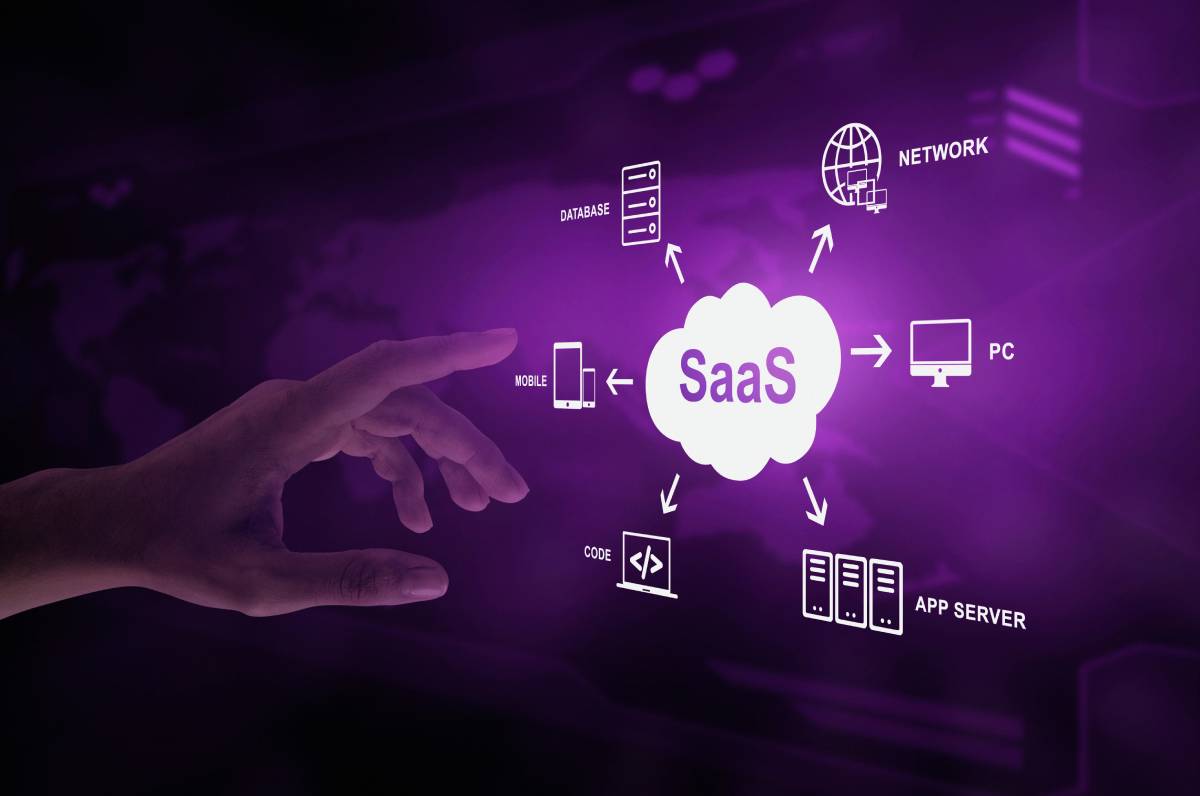
Executive Hook: The Scalability Imperative
By 2025, the global SaaS market is projected to hit $908 billion, growing at a steady 18.4% CAGR. From small startups in Mumbai to global enterprises, SaaS platforms are at the heart of digital transformation. But here’s the sobering fact: 70% of SaaS startups fail because of poor architectural decisions made in the first 18 months.
Why? Because traditional website architecture development approaches often cannot scale beyond a few thousand users. What works for 100 users breaks down at 10,000, and at 1 million users, you face:
- Outages and downtime.
- Escalating infrastructure costs.
- Security breaches due to rushed patching.
- Developers burn out because of tangled systems.
The solution isn’t just “better code.” It’s building scalable SaaS platforms from the ground up, with robust website architecture development, airtight website security, and streamlined website DevOps practices.
In this guide, we’ll explore:
- How to choose between monolithic vs microservices architecture.
- Multi-tenancy patterns for SaaS.
- Security frameworks like SOC 2, GDPR, and HIPAA.
- DevOps automation for continuous delivery.
- Cost optimization and future-proofing strategies.
Whether you’re a CTO scaling a new SaaS or an engineering leader maintaining enterprise-level platforms, this roadmap will help you avoid costly pitfalls and build for sustainable growth.
Architecture Foundation: Microservices vs Monolith Decision Framework
1.1 The Great Architecture Debate
Every SaaS journey begins with one critical choice: Monolith or Microservices?
Monolithic Architecture:
All components, UI, business logic, and database exist in a single, unified codebase.
Advantages:
- Faster initial development (perfect for MVPs).
- Easier debugging (one place to check logs).
- Lower upfront infrastructure costs (single deployment).
- Great for startups with small engineering teams.
Limitations:
- Harder to scale beyond a certain threshold.
- Any bug can crash the whole system.
- Deployment bottlenecks (one broken feature delays all).
- Tech stack lock-in (difficult to experiment with new frameworks).
Microservices Architecture:
Independent Website development services, each handling a specific business function, communicate via APIs.
Advantages:
- Independent scaling (scale only what’s needed).
- Technology diversity (use different languages or frameworks per service).
- Fault isolation (one failing service doesn’t crash the whole app).
- Easier onboarding for new teams.
Limitations:
- Higher complexity in design and operations.
- Expensive to set up CI/CD pipelines for multiple website development services.
- Monitoring and debugging across services is harder.
- Requires strong DevOps maturity.
Decision Matrix:
- Monolith fits small teams (under 10 devs), MVPs, and budget-sensitive startups.
- Microservices fit 20+ dev teams, enterprise SaaS, and high-availability platforms (99.9% uptime).
1.2 When to Choose Each Approach
Monolith Sweet Spot:
- Teams under 10 developers.
- Simple SaaS products (task apps, small CRMs).
- Tight launch timelines (3–6 months).
- Budget-constrained startups need fast market validation.
Microservices Justification:
- Platforms expected to serve 10M+ users.
- Complex SaaS with multiple modules (payments, analytics, integrations).
- Enterprise customers are demanding fault tolerance and uptime SLAs.
- Companies with multiple development teams working in parallel.
1.3 Hybrid Architecture Patterns
Not every SaaS needs to go all-in on either side. Hybrid models offer flexibility:
1. Modular Monolith
- One deployable unit, but internally separated into modules.
- Easier to migrate into microservices later.
2. Domain-Driven Design (DDD)
- Breaks business logic into bounded contexts.
- Example: Payments, Notifications, and User Management as separate domains.
3. Strangler Fig Pattern
- Gradually replace parts of a monolith with microservices.
- Perfect for SaaS companies scaling without risking downtime.
Real-world note: Netflix started as a monolith and gradually migrated to microservices as demand scaled to millions of users worldwide. Many successful SaaS platforms follow this evolutionary architecture path.
SaaS-Specific Architecture Considerations
When you move beyond the MVP stage and start thinking about scale, the architecture choices you make will either accelerate growth or hold you back. For SaaS platforms in 2025, the keyword is flexibility to handle 10x traffic spikes, enterprise compliance requirements, and rapid feature rollouts without breaking.
Multi-Tenancy Patterns
Multi-tenancy is the backbone of any scalable SaaS. It defines how you serve multiple customers (tenants) on the same infrastructure while ensuring security, performance, and compliance.
1. Shared Database Model
- How it works: A single database serves multiple tenants, with each record tagged by a tenant ID.
- Advantages:
- Cost-effective for startups and SMB-focused SaaS in Mumbai.
- Easier to maintain one schema.
- Risks:
- Potential “noisy neighbor” effect (one tenant consuming disproportionate resources).
- Security must be airtight (row-level isolation).
Best practice: Use PostgreSQL Row-Level Security (RLS) to enforce strict tenant isolation.
2. Database-per-Tenant Model
- How it works: Each tenant gets their own database.
- Advantages:
- Enterprise customers love this; it meets compliance needs (GDPR, HIPAA).
- Easier to isolate performance issues.
- Risks:
- Higher infrastructure costs.
- Operational overhead managing thousands of databases.
This model suits large financial services SaaS in Dubai or Mumbai, where compliance is non-negotiable.
3. Hybrid Approach
- How it works: Smaller tenants share databases, while large enterprise tenants get dedicated instances.
- Why it works: Provides flexibility without ballooning costs.
- Example: A SaaS HR platform in Mumbai may use shared databases for small startups but offer premium enterprise clients like TCS or Reliance Retail dedicated DB instances.
Service-Oriented Architecture (SOA) & API-First Design
The future of scalable SaaS is composable.
- API-first design: Every function is exposed via secure REST or GraphQL APIs. This ensures integrations with CRMs, ERPs, and third-party tools.
- Event-driven systems: Instead of synchronous calls, use message queues (Kafka, RabbitMQ) for scalability.
- Domain boundaries: Clear service ownership prevents spaghetti code and enables microservices to evolve independently.
Mumbai-specific note: Many fintech SaaS startups serving the UPI ecosystem rely heavily on event-driven architecture to handle millions of daily transactions with minimal latency.
Security Architecture & Compliance
When building scalable SaaS platforms, performance is only half the equation. The other half is trust. In 2025, customers expect SaaS providers to meet enterprise-grade security standards from day one.
Security-by-Design Principles
1. Identity & Access Management (IAM)
- Multi-Factor Authentication (MFA) for all admin access.
- Role-Based Access Control (RBAC) to restrict permissions.
- Single Sign-On (SSO) with providers like Okta and Azure AD.
- Zero-Trust Architecture: Every request is verified, even inside the network.
2. Data Protection
- Encryption in transit (TLS 1.3) and at rest (AES-256).
- Data masking in non-production environments.
- Key management using AWS KMS, GCP KMS, or HashiCorp Vault.
3. Tenant Data Isolation
- Never mix tenant data without hard boundaries.
- For shared databases, enforce strict row-level security.
Compliance Frameworks
SOC 2 Type II
- Focus: Security, availability, processing integrity, confidentiality, and privacy.
- Why it matters: Many enterprise clients in Dubai, Mumbai, and Singapore won’t sign a contract without it.
- Implementation: Logging, monitoring, access controls, and documented processes.
GDPR (General Data Protection Regulation)
- Relevance: Even if you operate in Mumbai, serving EU customers requires GDPR compliance.
- Key requirements:
- Data minimization (collect only what’s necessary).
- Right to erasure (ability to delete all customer data).
- Portability (download/export data in machine-readable formats).
HIPAA (Healthcare SaaS)
- Required if serving US healthcare clients.
- Strict controls on PHI (Protected Health Information).
PCI DSS (Payment Security)
- Mandatory if your SaaS processes payments directly.
- Most SaaS businesses in Mumbai integrate with Stripe, Razorpay, or PayPal, so PCI compliance is handled partly by them, but you still need secure handling of payment data.
Advanced Security Patterns
1. Threat Modeling (STRIDE Framework: Spoofing, Tampering, Repudiation, Information Disclosure, Denial of Service, Elevation of Privilege).
2. Security Testing:
- SAST (Static Analysis Security Testing) during development.
- DAST (Dynamic Application Security Testing) against running applications.
- Penetration Testing every quarter.
3. Incident Response Plans:
- Automated alerting with PagerDuty and OpsGenie.
- Runbooks for known attack vectors
4. Vulnerability Management:
- Weekly scans with tools like Snyk, Dependabot.
- Emergency patching processes.
Mumbai Case: A fintech SaaS startup in BKC experienced phishing-related account takeovers. By implementing MFA and anomaly detection, they reduced fraudulent logins by 80%.
DevOps Excellence & CI/CD Implementation
A scalable SaaS platform isn’t just about Website Architecture Development and Website security; it’s about how fast you can deliver new features without breaking the system. That’s where Website DevOps, CI/CD, and automation come in.
CI/CD Pipeline Architecture
Continuous Integration (CI) Best Practices
- Frequent commits: Developers commit small changes multiple times a day.
- Automated builds: One build pipeline that runs unit tests, linting, and security checks.
- Quality gates: Fail the build if test coverage drops or if vulnerabilities are detected.
- Feedback loop: Build + test cycle under 10 minutes to keep developer momentum.
Continuous Deployment (CD) Strategies
- Blue-Green Deployments: Run two environments (blue & green). Push new code to green, switch traffic if stable.
- Canary Releases: Roll out features gradually (start with 5% of users in Mumbai, then expand).
- Feature Flags: Toggle features on/off without redeployment.
- Automated Rollbacks: If errors spike, automatically revert to the last stable version.
Infrastructure as Code (IaC)
Modern SaaS platforms cannot scale without treating infrastructure like software.
- Principles: Declarative configs, version control, and idempotency.
- Tools:
- Terraform: Multi-cloud provisioning.
- AWS CloudFormation: AWS-native IaC.
- Kubernetes Manifests: Infrastructure for container orchestration.
- Pulumi: IaC with programming languages.
Best Practice: Keep dev, staging, and prod environments identical to avoid “works on my machine” issues.
Containerization & Orchestration
Docker Best Practices
- Use multi-stage builds to keep images small.
- Always run containers as non-root for security.
- Keep secrets outside containers (use Vault, AWS Secrets Manager).
- Add health checks for liveness and readiness probes.
Kubernetes Orchestration
For SaaS at scale, Kubernetes is now the default.
- High Availability: Multi-zone deployments with redundancy.
- Auto-scaling: Horizontal Pod Autoscaler adjusts resources dynamically.
- Service Mesh: Istio or Linkerd for secure service-to-service communication.
- Monitoring: Prometheus + Grafana for system and tenant-level insights.
Mumbai Example: A logistics SaaS platform scaled from 5k to 200k daily users using Kubernetes + auto-scaling in the AWS Mumbai region.
Observability & Monitoring
You can’t scale what you can’t measure.
Observability Strategy
- Metrics: CPU, memory, request latency, error rates.
- Logs: Structured logging with tenant IDs.
- Traces: Distributed tracing (Jaeger, OpenTelemetry) for debugging microservices.
Alerting & Incident Response
- ML-powered anomaly detection to reduce false positives.
- Escalation policies: First to dev, then to SRE, then to management.
- Runbook automation: Auto-heal simple issues like restarting failed pods.
- Post-incident reviews: Blameless retrospectives for continuous improvement.
Performance & Scalability Optimization
Database Scaling Strategies
- Read Replicas: Spread read-heavy workloads across replicas.
- Sharding: Partition data by tenant or geography.
- Caching: Redis or Memcached to cut DB load.
- Connection Pooling: PgBouncer for PostgreSQL scaling.
Application Performance
- CDNs (Akamai, Cloudflare) for static assets.
- API Rate Limiting to protect the backend.
- Asynchronous Processing: Use queues for non-critical tasks (email, notifications).
- Query Optimization: Regular DB audits to eliminate slow queries.
Cost Optimization & FinOps
Scaling SaaS is not just technical; it’s financial.
Cloud Cost Management
- Rightsizing: Adjust VM/container size based on actual usage.
- Reserved Instances: Save costs on predictable workloads.
- Spot Instances: Use for background jobs.
- Multi-cloud Strategy: Negotiate costs by avoiding lock-in.
Operational Efficiency
- Automation ROI: Calculate hours saved vs. cost of automation.
- Developer Productivity: Invest in CI/CD to reduce downtime.
- Container Density: Optimize resource usage without over-provisioning.
Future-Proofing & Technology Evolution
SaaS in 2025 is about being ready for the next decade.
Emerging Tech to Watch
- AI/ML Integration: Predictive analytics, automated support.
- Edge Computing: Ultra-low latency for fintech and IoT SaaS.
- Serverless: Pay-per-execution for unpredictable workloads.
- WebAssembly (Wasm): High-performance apps running inside the browser.
Organizational Readiness
- Team Structures: Organize teams by service or domain.
- Skill Development: Train devs in Kubernetes, IaC, and security practices.
- Change Management: Roll out gradually, measure, adjust.
Decision Framework & Checklist
When evaluating SaaS architecture, security, and Website DevOps, use this 5-point checklist:
- Architecture Fit: Monolith for MVP, microservices for scale.
- Security: SOC 2, GDPR, MFA, zero-trust non-negotiable.
- DevOps Maturity: Automated CI/CD, IaC, containerization.
- Observability: Metrics, logs, and traces in one platform.
- Cost Control: FinOps practices to avoid runaway bills.
Conclusion
Building scalable SaaS platforms in 2025 means balancing architecture, security, and DevOps. Startups in Mumbai, Dubai, and beyond need to think beyond MVPs and design for 10M+ users, enterprise compliance, and future-proof technology.
If you’re planning to scale your SaaS platform, the next step is clear:
👉 Get a free SaaS architecture and DevOps audit to identify gaps in scalability, security, and performance.
FAQs
Q1. What makes a SaaS platform scalable?
A scalable SaaS platform handles growth from hundreds to millions of users with strong architecture, load balancing, and optimized databases.
Q2. How do website DevOps practices improve SaaS scalability?
DevOps enables fast, reliable releases using CI/CD pipelines, automated testing, and infrastructure as code to reduce downtime.
Q3. Why is website security critical for SaaS platforms?
Security ensures compliance (SOC 2, GDPR), prevents breaches, and protects tenant data, which is essential for enterprise adoption.
Q4. Should I choose a monolithic or microservices architecture?
Choose monolithic for MVPs and small teams; choose microservices for enterprise-scale SaaS with complex domains.
Q5. How much does Scalable SaaS platform development cost?
Costs depend on complexity, compliance, and infrastructure, ranging from small MVP budgets to enterprise-level multi-cloud deployments.

